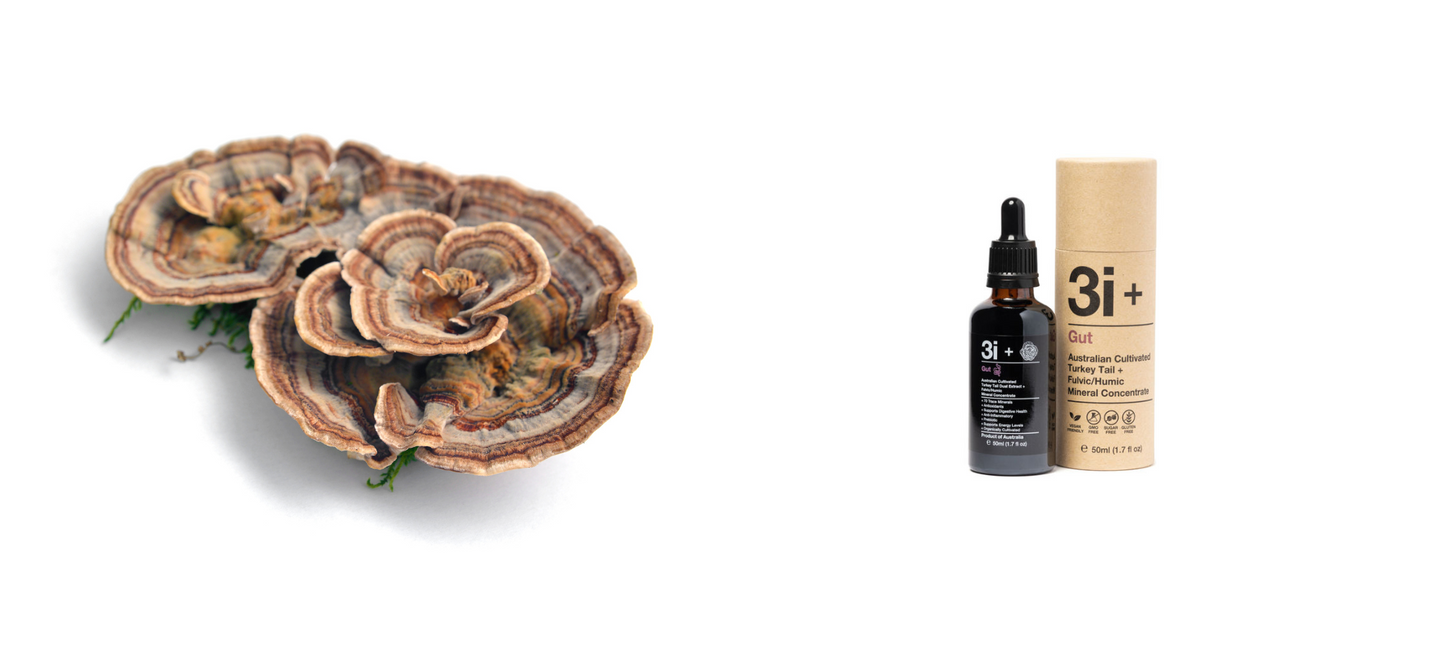
Introduction:
In the world of fungi, the Turkey Tail mushroom (Trametes versicolor) stands out as a colourful and intriguing species. With its distinctive fan-shaped cap featuring vibrant hues resembling the tail feathers of a turkey, this mushroom is not just a visual delight but also an intriguing subject of research and traditional use in various cultures. While Turkey Tail mushrooms are native to many regions worldwide, including Australia, they hold particular significance in traditional Aboriginal medicine. In this blog, we'll delve into the unique characteristics of Australian Turkey Tail mushrooms and explore their potential health benefits without making any medical claims.
Turkey Tail Mushrooms Down Under:
Australia is home to a diverse range of mushrooms, and Turkey Tail is no exception. In Australia, Turkey Tail mushrooms are found growing in various environments, from eucalyptus forests to subtropical rainforests. They are typically discovered on decaying wood, tree stumps, and fallen branches.
The Appearance:
As the name suggests, Turkey Tail mushrooms feature a distinctive fan-shaped cap with concentric rings, often displaying an array of colours, from brown, beige, and black to green, blue, and violet. These colours can give rise to intricate patterns, making them visually appealing and easy to identify.
Health Benefits (Non-Medical):
While Turkey Tail mushrooms are celebrated for their various health properties, it is important to emphasize that these claims are not medical recommendations but rather areas of interest for further research and exploration. Here are some potential health benefits associated with Turkey Tail mushrooms:
-
Immune Support: Turkey Tail mushrooms are rich in polysaccharides, including beta-glucans, which are known for their potential immune-boosting properties. These compounds may help support the body's natural defence mechanisms.
-
Antioxidant Power: These mushrooms are a source of antioxidants, which can help combat oxidative stress by neutralizing harmful free radicals in the body.
-
Digestive Health: Turkey Tail mushrooms contain prebiotics, which can support the growth of beneficial gut bacteria. A healthy gut microbiome is essential for overall well-being.
-
Adaptogenic Properties: Some traditional systems of medicine suggest that Turkey Tail mushrooms may have adaptogenic properties, helping the body adapt to stressors and maintain balance.
-
Antiviral and Antimicrobial Potential: Research suggests that the bioactive compounds in Turkey Tail mushrooms may possess antiviral and antimicrobial properties, which could contribute to overall health.
-
Anti-Inflammatory Effects: The mushroom's anti-inflammatory properties may help alleviate inflammation-related conditions.
Cultural Significance:
In many Australian Indigenous cultures, Turkey Tail mushrooms hold significance beyond their potential health benefits. They have been used for their unique qualities in traditional healing practices. The Indigenous people of Australia have a deep connection with the land and its natural resources, including mushrooms, which play a part in their cultural and spiritual practices.
Conclusion:
Turkey Tail mushrooms are a captivating and potentially beneficial species found in Australia. While they have garnered attention for their immune-boosting and other health-related properties, it is essential to remember that these claims are not medical advice. Always consult a healthcare professional before incorporating new supplements or dietary changes into your routine. Whether you're a mushroom enthusiast, a forager, or simply curious about the natural wonders of the Australian landscape, Turkey Tail mushrooms are an intriguing subject to explore, appreciate, and respect for their cultural and ecological significance.In the realm of fungi, Turkey Tail mushrooms continue to reveal their secrets, offering not only a feast for the eyes but also a potential source of health and healing, rooted in traditions that stretch back for centuries.
